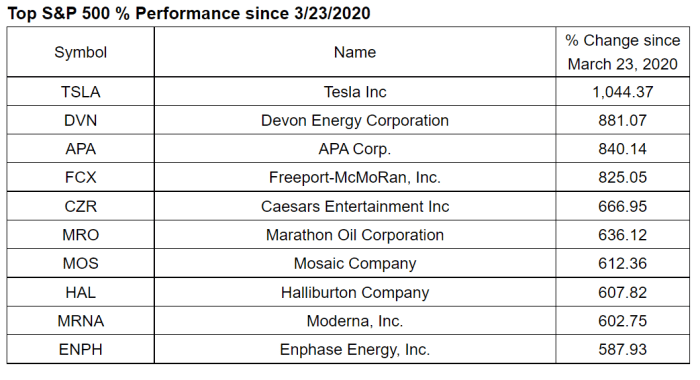The stock market hit its COVID low 2 years ago today. Here’s how its performance since then stacks up.
It’s the second anniversary Wednesday of the lows set in the U.S. stock-market plunge triggered by the onset of the COVID-19 pandemic in early 2020.
Stocks have stumbled thus far in 2022, but the S&P 500 SPX,
The Dow Jones Industrial Average DJIA,
The market’s performance “reminds us how volatile emotional investing decisions can be, particularly as we consider how the markets have unexpectedly doubled in two years despite COVID-19 lockdowns, historic levels of inflation and war in Ukraine,” said Mark Hackett, chief of investment research at Nationwide, in a note.
The S&P 500 closed at a record on Feb. 19, 2020, but stocks soon began to slide as alarm rose over the spread of COVID-19. The selloff soon accelerated into a white-knuckle panic that took the S&P 500 and Dow Jones Industrial Average DJIA,
The chaos wasn’t confined to stocks. The Treasury market nearly seized up. The U.S. dollar DXY,
The stock-market bottom didn’t spell the end of volatility across markets. A soon-to-expire oil futures contract in April 2020 traded, and closed, in negative territory for the first time ever, for example.
The S&P 500’s rise from the low has been led by the energy sector, which has soared in 2022 as crude prices CL.1,
Among individual stocks, Tesla Inc. TSLA,

The pandemic, meanwhile, has taken a huge toll on lives while amplifying political divisions in the U.S. and other countries. Shock waves continue to reverberate through the global economy. The Fed and most other major central banks are now moving to rapidly unwind the extraordinary easy money measures put in place as they deal with a surge in inflation fueled in part by pandemic-related supply-chain bottlenecks.
While the underlying economic picture in the U.S. remains strong, Russia’s invasion of Ukraine last month has contributed to a surge in commodity prices, which has stoked fears of a possible return of stagflation — a pernicious combination of high inflation and stagnant economic activity.
The Nasdaq Composite slumped into a bear market earlier this month, while the Dow and S&P 500 have entered correction territory — defined as a drop of 10% from a recent peak. Stocks have since bounced from recent lows, however, with the S&P 500 trading less than 6% away from its all-time high.




